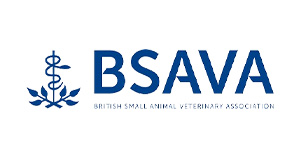The Heartache of Tuberculosis Testing: A Vet’s Perspective
Published on: Sep 12th, 2015
At Shepton vets, we consider it our duty to safeguard the health and well-being of livestock, and tuberculosis (TB) in cattle is a pressing concern in the picturesque landscapes of Somerset. As part of our commitment to combat this disease, our TB testers embark on days filled with hope and trepidation, knowing the implications of each test result for farmers and their herds. We understand the emotional toll it takes when a reactor is found and the broader ramifications it can have on herd management and finances. Despite the challenges, we find strength in our close-knit relationship with farmers and the invaluable time spent with these gentle giants.
Tuberculosis (TB) in cattle is currently a major problem in Somerset. It is spread from cow to cow and via wildlife. DEFRA requires all cattle to be tested regularly using a skin test and any animals which develop a large enough skin reaction are removed from farm and slaughtered.
A day in the life of a TB tester can often involve a very early start. Many farmers prefer to test during morning milking to minimise the stress on the cows so that they don’t need to be moved away from their food and beds for too much longer than normal.
Day 1 of the test involves injecting a tiny amount of avian and bovine tuberculin into the skin on the side of the cow’s neck, after clipping the hair and measuring the skin thickness. 3 days later is Day 2 – reading day. These areas are checked for reactions and the skin is re-measured and lumps over a certain size make the animal a reactor.
When I watch each animal coming down the race I dread seeing the tell-tale lumps. I measure them – then I re-measure them just to be 100% sure of the result. When I break the news to the farmer the response varies. It may be quiet resignation or it may be angry frustration but it’s always sadness that more animals are to be taken away against their wishes.
Testing cows for TB is stressful – for the cows, for the farmer and for the vet. It can also be dangerous. Cows frequently weigh 500kg or more and bulls can exceed 1000kg and moving them around and handling them when they are out of their normal routine can (and does) lead to injuries to the farm workers, the vet and the cattle themselves.
Reading day is especially stressful for farmers. This is the day when they learn if their animals will be spared or whether they will be sent for compulsory slaughter. TB does not differentiate between young or old, the hand reared calf called ‘Maisie’, the valuable bull or the cow that always comes over for a good head rub.
Not only does having a reactor lead to compulsory slaughter of that animal, it leads to a whole herd movement restriction and that can cause difficulties in managing the herd in terms of housing and grazing, as well as financially. Farmers receive compensation for the animals taken but this often does not reflect the true market value of those animals.
The financial effects are far reaching – the sale of other animals in the herd is restricted and values reduced, extra food may have to be bought in to feed animals which would previously have been sold but now have to be kept, extra man power and equipment is required to carry out each test and testing days take farmers away from their day to day work.
This job has many benefits – it keeps me fit, I get to spend time with hard working realistic countrymen and women who keep me entertained and (of course) I get to spend lots of time with lovely cows but the down side is a big one – when I have to break the news that I’ve found another reactor knowing the knock on effect this result will have.











